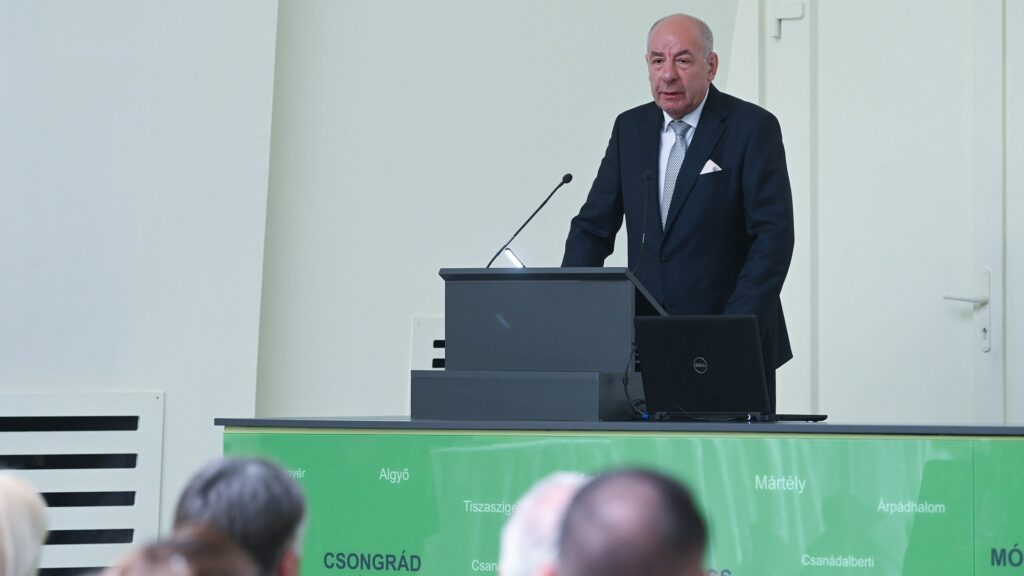It is extremely rare to read an impartial analysis of Viktor Orbán and Fidesz in European or American media. Most of the time, the products of the ruling party’s international networking aspirations are found (which naturally put Fidesz in a better light), or the opposition’s position is translated into a foreign language. Obviously, impartiality does not necessarily result in only false conclusions, but sincere ambition for capturing Hungarian political reality has become an uncommon phenomenon.
Fortunately, the situation is a little more promising in domestic disputes as Hungarian political science has produced several monographs on Orbán’s politics above the everyday political debates. Following international trends, populism served as a common framework for analysis in recent years.[1] Furthermore, certain scholars have placed the so-called Orbán regime (and Orbán as a political leader) into their focus.[2] The Centre for Fair Political Analysis (CFPA, in Hungarian: Méltányosság Politikaelemző Központ) has contributed to this topic from a new perspective as they analyse Fidesz as a dominant party in a book entitled Ruling Party: Fidesz in Historical and International Context published at the end of 2021 in Hungarian.[3]
The concept of the dominant party has been widely known in political science since the 1940s, but using it for a systematic conceptualization of the past decade of Hungarian politics is a novelty. Besides prominent political scientist and director of the Institute Ervin Csizmadia, young researchers were among the authors, including Júlia Lakatos, Zoltán Novák, Ádám Paár and Gergely Rajnai. The CFPA published a concise book summary last year on their official website.[4] Nevertheless, based on its excellence, this monography deserves more attention. After presenting the initial ideas and the framework of analysis, this short review intends to offer a few insightful arguments while emphasizing the book’s merits. At the end, two pieces of criticism will be shared.
One of the initial ideas of the book is that the governing party of Hungary, Fidesz, has been receiving less attention than its leading politician, Viktor Orbán and the system itself. The authors also maintain that in most analyses, the success of the party is explained by the erosion of democracy, rising corruption, and populism.[5] These two observations on the current state of scientific approaches are valid. If Fidesz is only used as a synonym for the party’s leader, Orbán (which might flow from the fact that he has undisputed authority over it), particularly vital aspects are overlooked.
Namely, that this party is a well-organized community and a necessary element for electoral success.
In short, no party, no Orbán. Thus, departing from the previous interpretative frameworks, it is essential to examine the party itself.
In their introduction, the authors pose two guiding questions Fidesz also had to solve after 1990: How to become a big party? How to acquire a government position? The authors delve into international comparison and domestic history to answer these inquiries and decide whether Fidesz is a unique phenomenon or whether it fits into a larger pattern. But first, always theory.
No one should worry about not being aware of the basics concerning the ideas related to dominant parties. Even if readers are tempted to skip the theoretical part of the book, it must be noted that it is well-structured, grounded, and readable. Not only are the relevant ideas of Duverger, Almond, Sartori, Boucek, and other significant figures of political science presented, but the essential questions concerning dominant parties are also raised: Is dominance good or bad? What is the relationship between dominance and democracy? What are the main reasons for dominance? Concerning the last question, the authors argue that—besides the already investigated causes, such as the electoral system—five aspects explain Fidesz’s dominance: the view of the past, the image of the nation, the perception of democracy, leadership, and the party’s role in the party system (and in relation to the opposition). The central part of the book elaborates on these five aspects, focusing on Fidesz and two additional international examples of dominant parties in each chapter.
Based on the analysis of the South African National Congress, the Swedish Social Democratic Party, and Fidesz concerning their view of the past (or what could be called the view of history), the most relevant lesson is that all tried to transcend the past and their intention was a cultural change.
Even if it is less emphasized in the two foreign examples how it precisely happened, this kind of radical change in perception contributed to their success, thus ultimately aiding them in becoming a dominant party.
The comparison of the images of the nation at Kuomintang, the Scottish National Party and Fidesz easily convinces the reader that it is one, if not the most decisive, of the five features. In all three cases, political nationalism was used to establish and maintain dominance. The concept of the nation is used exclusively;
the governing parties aim to pose themselves as the only legitimate representatives of national interest
(obviously, it is a crucial question whether the electorate believes them or not). It is aptly presented how Fidesz identified the party (or the political camp) with the Hungarian nation. Furthermore, being part of the nation is a moral category, and the ‘national interest’ has become a guiding principle of governance.
The chapter on concepts of democracy includes a comparison with two exciting examples, the Argentine Justicialist Party and the Mexican Institutional Revolutionary Party, but its excellence rather comes from its examination of how the party’s relation to democracy and liberalism—not independently from international trends—has changed in the past 30 years.
Obviously, the unique role of political leaders could not be omitted. After a short portrait of Nehru’s and Li Kuang-jao’s leadership, Orbán is in focus. The authors separate the formal (eg party structure and decision-making) and informal (eg creativity, generating competitions and rivalries) elements of Orbán’s party leadership. Afterwards, they present how his character changed in the last three decades and the substantial political instruments that contributed to his leadership. A lot could be cited here, but one of the key terms is pragmatism; Orbán—just like Li Kuang-jao—could successfully adapt to new political situations.
The analyses of the Republican People’s Party in Turkey and the Liberal Democratic Party in Japan show differences from Fidesz, including the party’s internal fragmentation and its relation to the opposition. From this theoretically rich chapter, only two takeaways. First, to understand Fidesz as a party and its role in the system, one cannot spare the consideration of the opposition and Fidesz’s view of the opposition. Second, no matter how foreign Nietzsche’s axiom may seem in the 21st century, it is probably true that
one must want the power to become dominant.
This last aspect is perhaps the most significant addition to understanding the system in which Fidesz governs.
The book’s third part is a short historical discussion of the party system over the last 30 years and an overview of two episodes in Hungarian political history, the dualism of the Austro–Hungarian Monarchy and the Horthy era. The chapter includes all the merits of the former; and it intends to analyse Fidesz as objectively as possible, presenting the contesting interpretations. Furthermore, a longer time frame is used. A historical perspective, that is, examining the events as a part of broader progress helps learn the recurring patterns, continuities, and discontinuities of Hungarian history and can also prevent biased arguments that stem from a focus that is too narrow. For instance, Fidesz’s dominance cannot be understood if the pre-2010 period—which included failures and reorientations—is not examined.
Finally, two shortcomings. First, the reader of the book can rightly feel that specific ‘great questions’ are not answered properly. Probably the most disturbing is whether a hegemonic or a dominant party system exists in Hungary. The authors are clear in their conclusion; they treat Fidesz as a dominant party. Still, such a delicate and significant question needs a more thorough investigation or reasoning. It is quite acceptable, or even respectable, to limit the focus of the study and leave the answer to other experts. Nevertheless, in this case, they close the question too quickly; if there is a book that could settle this question (or at least enrich the debate on it) by examining not just whether Fidesz meets the criteria of dominant parties but whether it has also occupied a hegemonic position, it could or should have been this book.
Second, the book’s aim would have been better served if it had been two books or one book with two volumes. The international examples appear disproportionately more than the historical aspect. The former is decent in length as it is; it is rather the historical aspect that is too short. The ratio is around five to one concerning the number of chapters and pages. This decision is somewhat incomprehensible because the latter is one of the best-written parts of the book. The analysed periods of Hungarian history deserve more than roughly ten pages. Even if the Kádár regime (1956–1989) is not included, Csizmadia’s outstanding knowledge of the history of Hungarian politics should have been utilized more. Fortunately, the feeling of deficiency is less when one considers that Csizmadia’s book, The Logic of Hungarian Political Development (1990–2022)[6] was recently translated into English. Still, if any publisher (or the CFPA itself) would intend to translate a balanced or fair analysis of current Hungarian politics into English, the book the Ruling Party: Fidesz in Historical and International Context would undoubtedly be a great choice.
[1] Eg Körösényi, András; Patkós, Veronika, ’Liberális és illiberális populizmus – Berlusconi és Orbán politikai vezetése’, Politikatudományi Szemle, XXIV/3. 29–54.; Farkas, Xénia; Benne, Márton, ’Orbán Viktor vizuális és verbális populista stílusa a Facebookon’, Politikatudományi Szemle, XXXI/3. 82–108.
[2] E.g. Körösényi, András; Illés, Gábor; Gyulai, Attila, Az Orbán-rezsim. A plebiszciter vezérdemokrácia elmélete és gyakorlata, Osiris Kiadó, Budapest, 2020.
[3] Csizmadia, Ervin; Lakatos, Júlia; Novák, Zoltán; Paár, Ádám; Rajnai, Gergely, Uralkodó Párt: A Fidesz nemzetközi és hazai történeti összehasonlításban, Gondolat Kiadó–Méltányosság Politikaelemző Intézet, 2021.
[4] Rajnai, Gergely, ‘Fidesz Dominance’, In Official Website of Méltányosság Politikaelemző Központ. https://meltanyossag.hu/wp-content/uploads/2022/02/the-dominance-of-fidesz-1.pdf. (14 February 2022), accessed 10 April 2024.
[5] Ibid, 2023.
[6] Csizmadia, Ervin, The Logic of Hungarian Political Development (1990–2022), Lexington Books, 2024.
Read more from Ádám Darabos:








